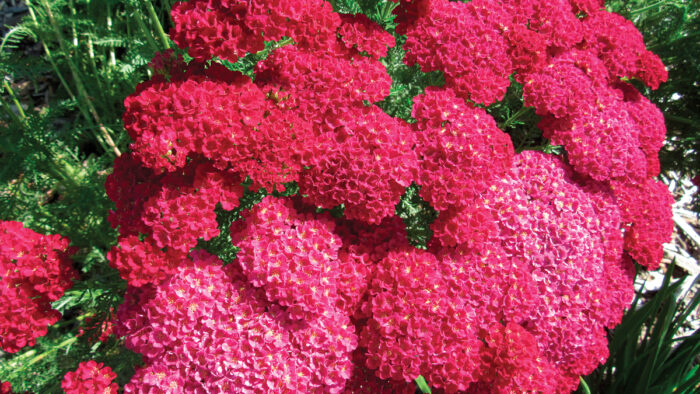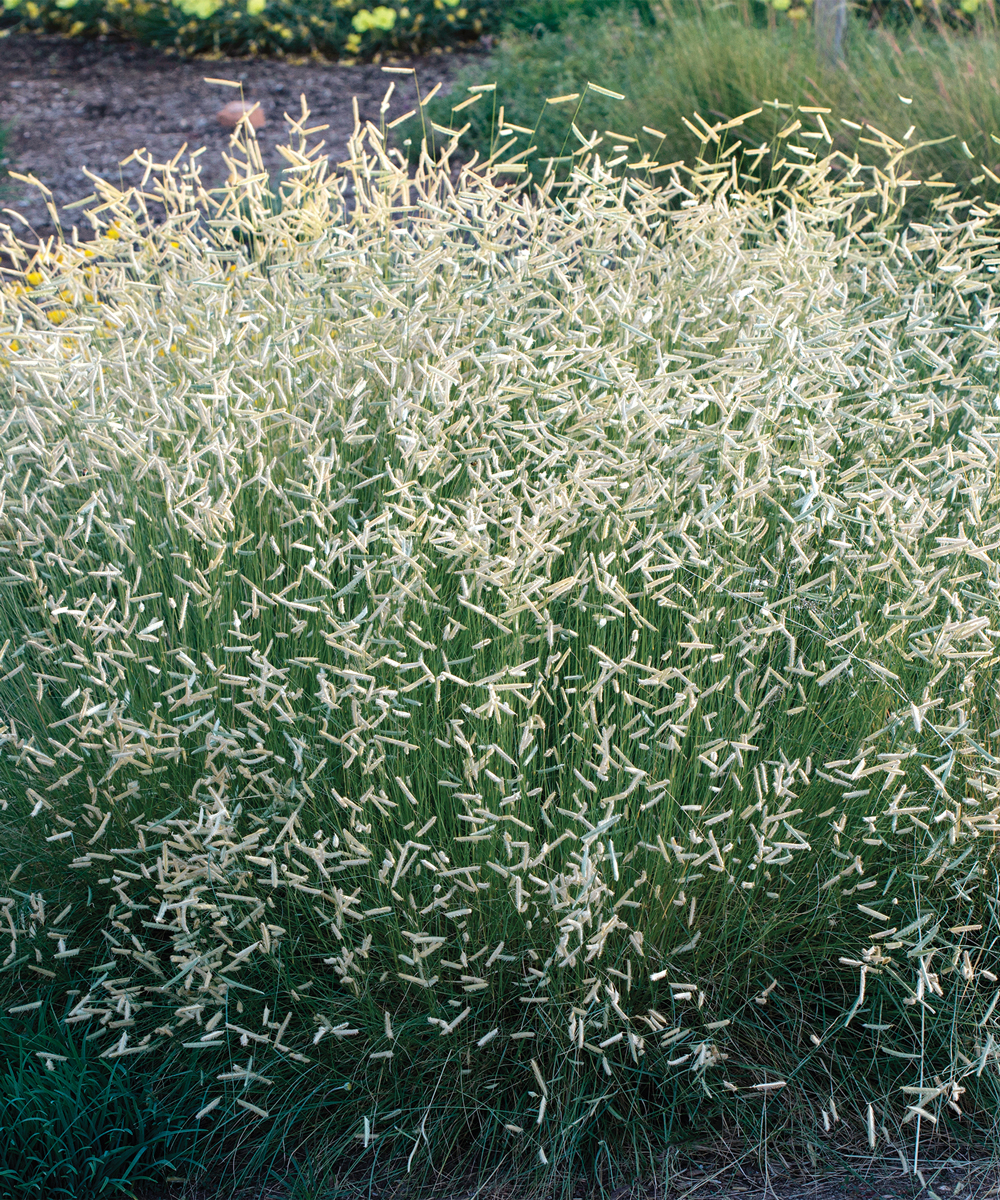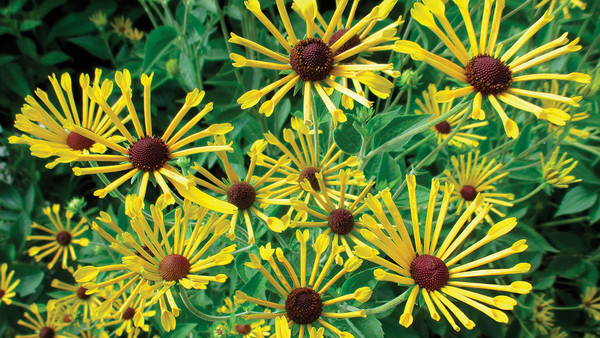
While we would all ideally have gardens that look at their peak in every season, the reality is often far from that ideal. Very few of us have all the time in the world to dedicate to our gardens, and the hard truth is the planning and work that goes into gardening means we often only get one season where we can sit back and enjoy the fruits of our labor.
As Executive Editor Danielle Sherry explains, “Winter is for planning. It’s when you really don’t want to be outside and when your time is better spent formulating the plan of attack to make your garden the best it can be. Spring is the working time period, when the bulk of your cleanup, planting, and projects get done. Fall is also a working period and is generally when you can revisit the things you didn’t get done in spring.”
After all of that prep and planning, you want to ensure your summer garden is at its prime when it’s finally too hot to toil. To help ensure your summer garden really shines, regional experts shared their favorite perennials for this peak season. Find picks for the Northern Plains below, and be sure to check out more fabulous summer selections in Peak-Season Combos.
1. ‘Salsa’ Sneezeweed

Name: Helenium ‘Salsa’
Zones: 3–9
Size: 1½ to 2 feet tall and wide
Conditions: Full sun; well-drained soil
Native range: Hybrid
Sneezeweed is an underutilized perennial that ‘Salsa’ aims to remedy. It’s party time in the garden when this plant bursts into bloom. The flat, disk-like, bright red flowers have unusually prominent raised centers. As the blooms age, individual flowers take on various hues of orange and yellow, creating a multicolored effect that shouts for attention. At this plant’s peak, abundant blooms completely cover the foliage. ‘Salsa’ is midsize in stature, so it is equally comfortable at the front or the back of the border. Bees, butterflies, and hummingbirds will be eager party attendees, while deer and bunnies will be noticeably absent. This sneezeweed is drought resistant and tolerant of moist or dry soil as long as it drains well.
2. ‘Gilded Lace’ Coreopsis

Name: Coreopsis ‘Gilded Lace’
Zones: 3–8
Size: 3 to 4 feet tall and 2 to 3 feet wide
Conditions: Full sun; well-drained soil
Native range: Hybrid of eastern North American
species
Coreopsis are classic summer stalwarts, with ‘Gilded Lace’ being one of the most graceful and attractive varieties. A naturally occurring hybrid, ‘Gilded Lace’ sports unique and very attractive foliage. Long, thin leaves create an airy or, as the name suggests, lacy effect that is unusual in tall perennials. Numerous shiny yellow flowers, accented by brown centers, are a favorite of bees and butterflies, making this coreopsis the perfect addition to pollinator gardens. For an eye-catching combo of texture and color, try pairing ‘Gilded Lace’ with the coarse foliage of globe thistle (Echinops spp. and cvs., Zones 3–9) or with the stunning dark leaves of ‘Dark Towers’ penstemon (Penstemon ‘Dark Towers’, Zones 3–8).
3. Blue Grama Grass

Name: Bouteloua Gracilis
Zones: 3–10
Size: 1 to 2 feet tall and 1½ to 2 feet wide
Conditions: Full sun; dry to medium, well-drained soil
Native range: Southern and western North America
Blue grama grass is a cute, clump-forming, warm-season prairie native. Its long, thin foliage is bluish gray and creates a soft see-through effect in dense plantings. Arching stems appear in midsummer and are topped with unusual one-sided dark flowers, earning it the moniker of “eyelash grass.” These inflorescences dance about in the wind, adding a whimsical note to any planting. Whether planted in small or large groups, blue grama grass is equally at home in meadows, xeriscape gardens, and naturalistic plantings, as well as the front of the border. It attracts small butterflies and is the larval host for many species of skipper butterflies. It’s also tolerant of a wide range of soil types.
4. ‘Pomegranate’ Yarrow

Name: Achillea Millefolium ‘Pomegranate’
Zones: 3–9
Size: 1½ to 2 feet tall and wide
Conditions: Full sun; dry to medium, well-drained soil
Native range: North America, Europe, Asia
The common native white yarrow (A. millefolium) is ubiquitous in prairie grasslands, but it’s not the flashiest of perennials. Enter the cultivar ‘Pomegranate’. This plant is no shrinking violet. The dense, flattened clusters of bright magenta flowers seem to shout, “Look at me!” Below, ferny foliage is a soft gray-green and emits a spicy fragrance when brushed. ‘Pomegranate’ is a blooming powerhouse when planted in lean soil and, if deadheaded, will flower from late June to frost. Combine it with tall perennials such as salvias (Salvia spp. and cvs., Zones 5–11), burnet (Sanguisorba spp. and cvs., Zones 4–8), and coneflowers (Echinacea spp. and cvs., Zones 3–9) for a gorgeous summer display. rocky soil as long as there is good drainage. Water it regularly during prolonged dry weather for best flowering.
Elaine Rude is the owner of Paintbrush Garden Design in Calgary, Alberta.
Fine Gardening Recommended Products

The Nature of Oaks: The Rich Ecology of Our Most Essential Native Trees
Fine Gardening receives a commission for items purchased through links on this site, including Amazon Associates and other affiliate advertising programs.

Planting in a Post-Wild World: Designing Plant Communities for Resilient Landscapes
Fine Gardening receives a commission for items purchased through links on this site, including Amazon Associates and other affiliate advertising programs.

Gilmour 811673-1001 Sprinkler
Fine Gardening receives a commission for items purchased through links on this site, including Amazon Associates and other affiliate advertising programs.
- Adjustable collar for partial- to full-circle coverage
- Dial precisely sets spray distance
- On/off switch eliminates trips from sprinkler to spigot


















Comments
Log in or create an account to post a comment.
Sign up Log in